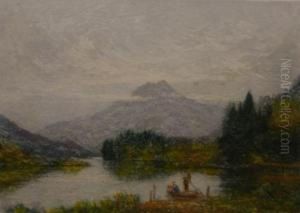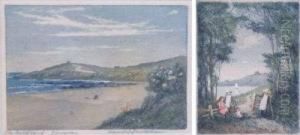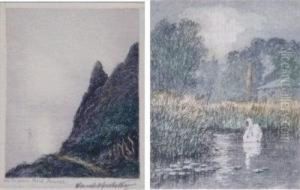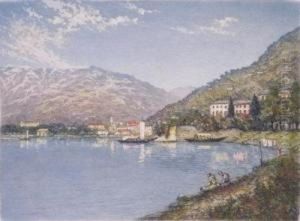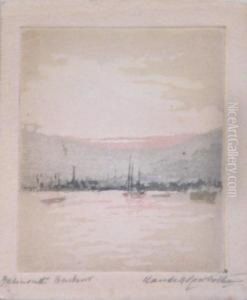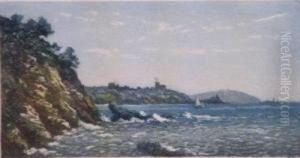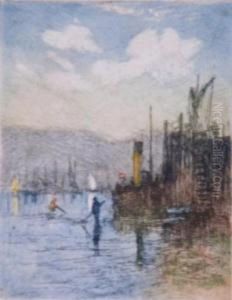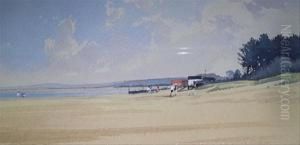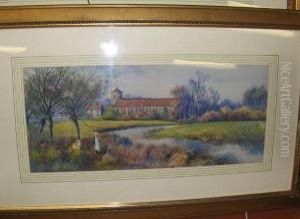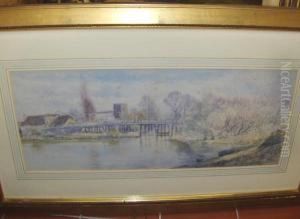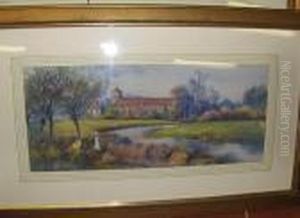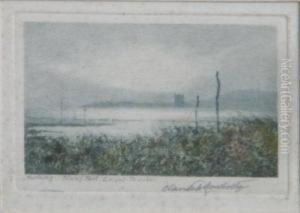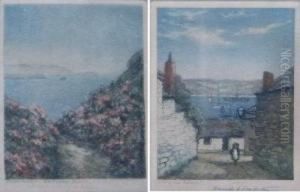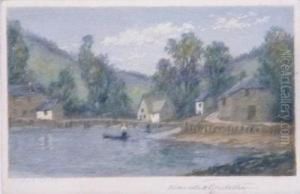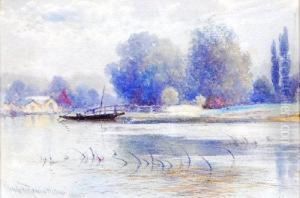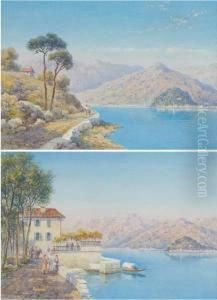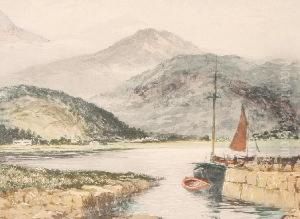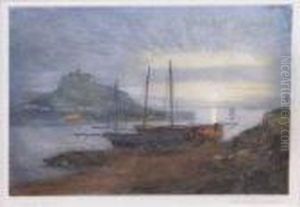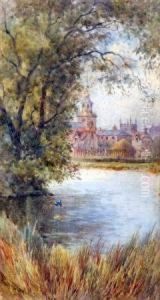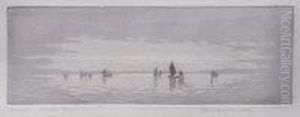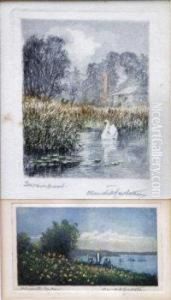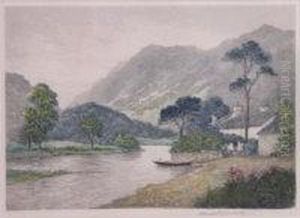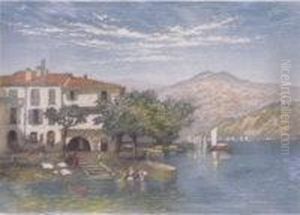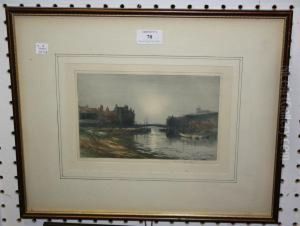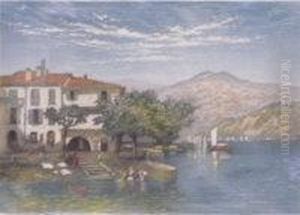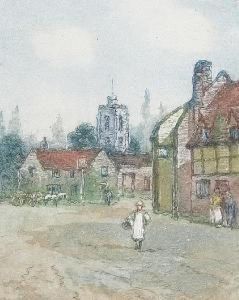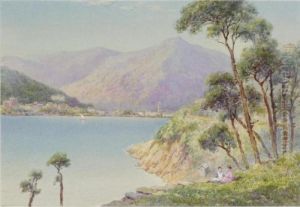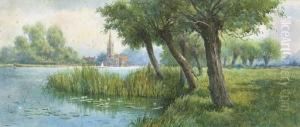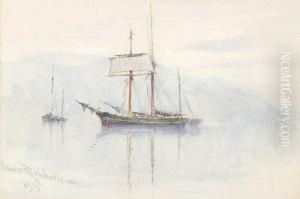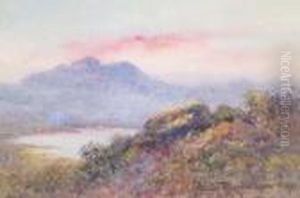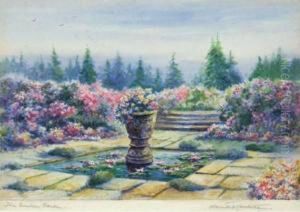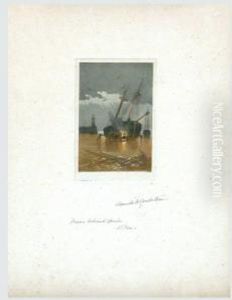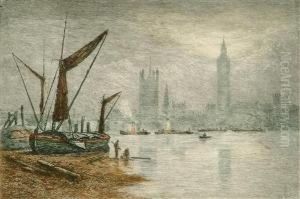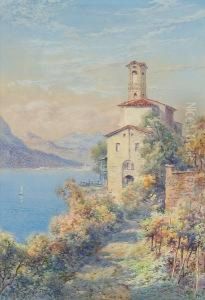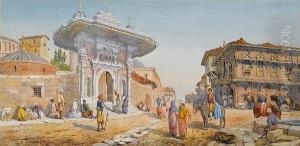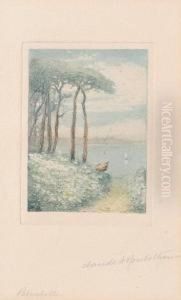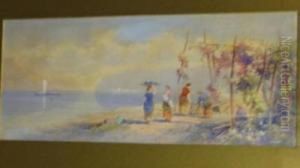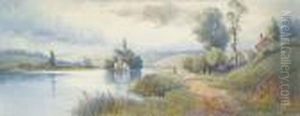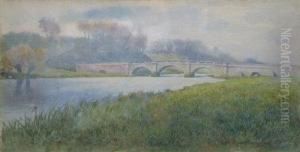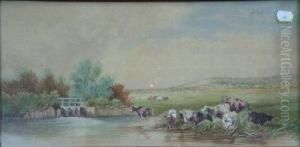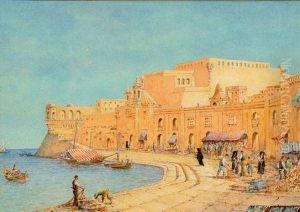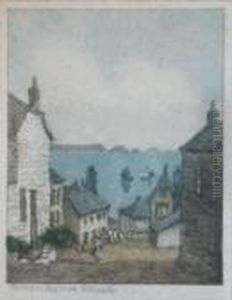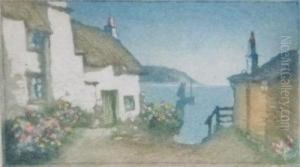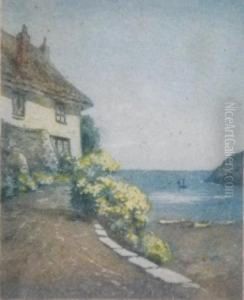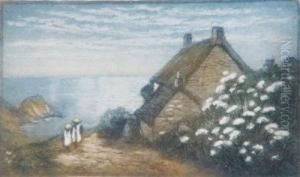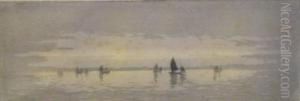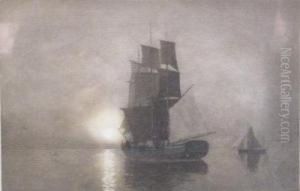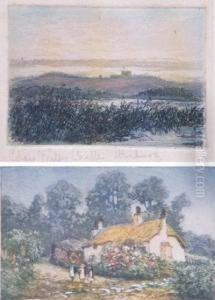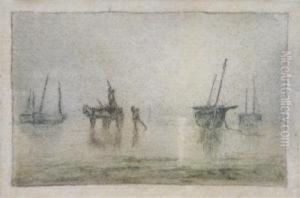Claude Hamilton Rowbotham Paintings
Claude Hamilton Rowbotham was a British artist known for his work in watercolors and printmaking, particularly in the medium of coloured aquatint. Born in 1864, Rowbotham was part of the late 19th and early 20th-century movements that saw a revival in the interest of the aquatint process, which is a variant of etching.
Rowbotham was educated at the Slade School of Fine Art in London, which was a leading institution for art education in Britain. He was part of a generation of artists who were exploring the possibilities of printmaking techniques, and he became particularly known for his landscapes and coastal scenes. His work was characterized by a delicate use of color and a keen observation of light and atmosphere, which was well-suited to the aquatint technique.
Throughout his career, Rowbotham exhibited his works at various venues, including the Royal Academy and the Royal Society of Painter-Etchers and Engravers, of which he was a member. His prints were popular in his time and were collected by a number of art lovers and connoisseurs.
In addition to his landscapes, Rowbotham also depicted urban scenes and was interested in capturing the changing face of Britain at the turn of the century. His work provides a valuable historical record of the era as well as demonstrating the aesthetic sensibilities of the period.
Claude Hamilton Rowbotham's contribution to British printmaking continued until his death in 1949. While he may not be as widely known as some of his contemporaries, his work has been appreciated by those with an interest in the aquatint process and the history of British art. Today, his prints can be found in various art collections and continue to be studied for their technique and historical value.
